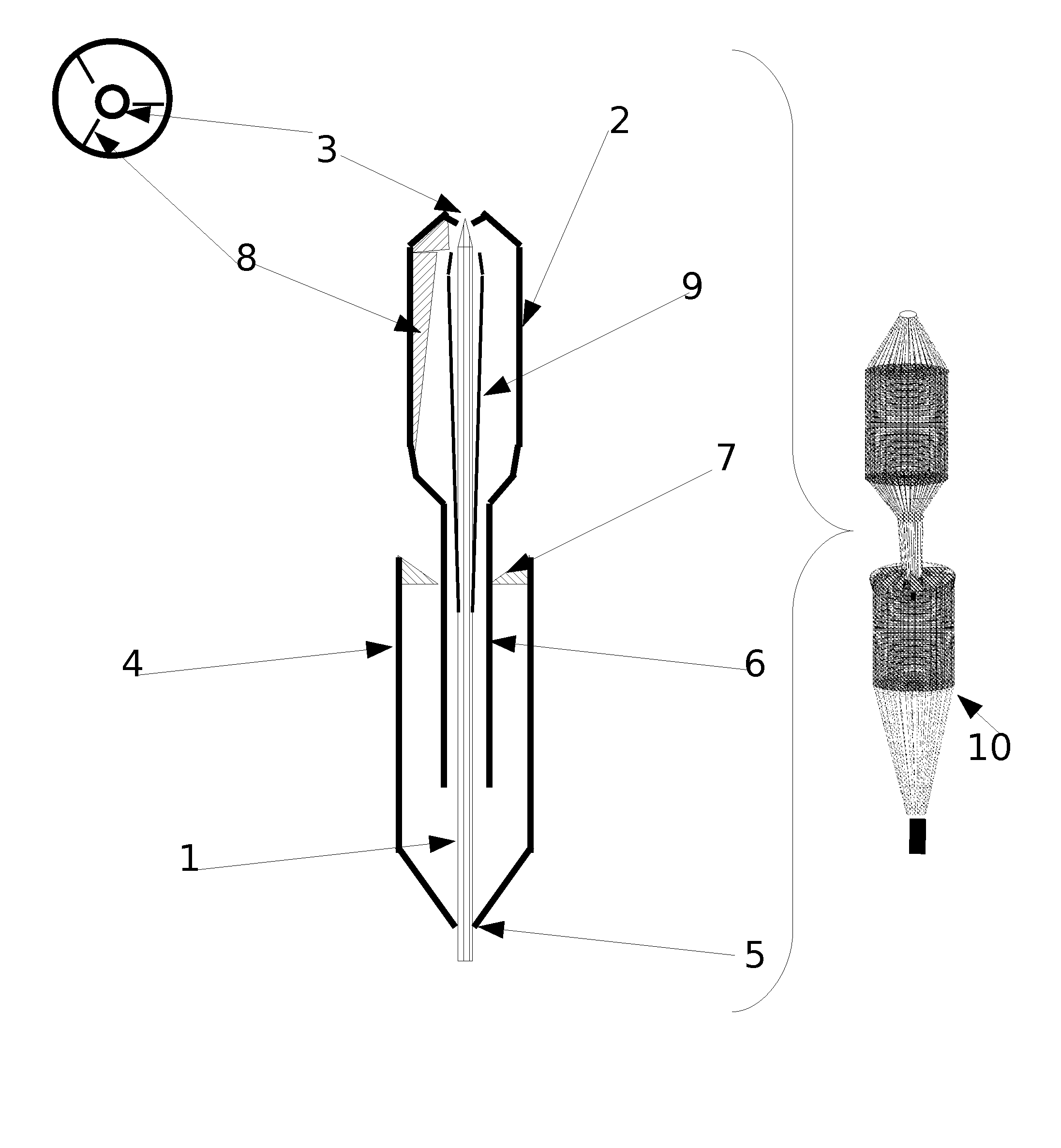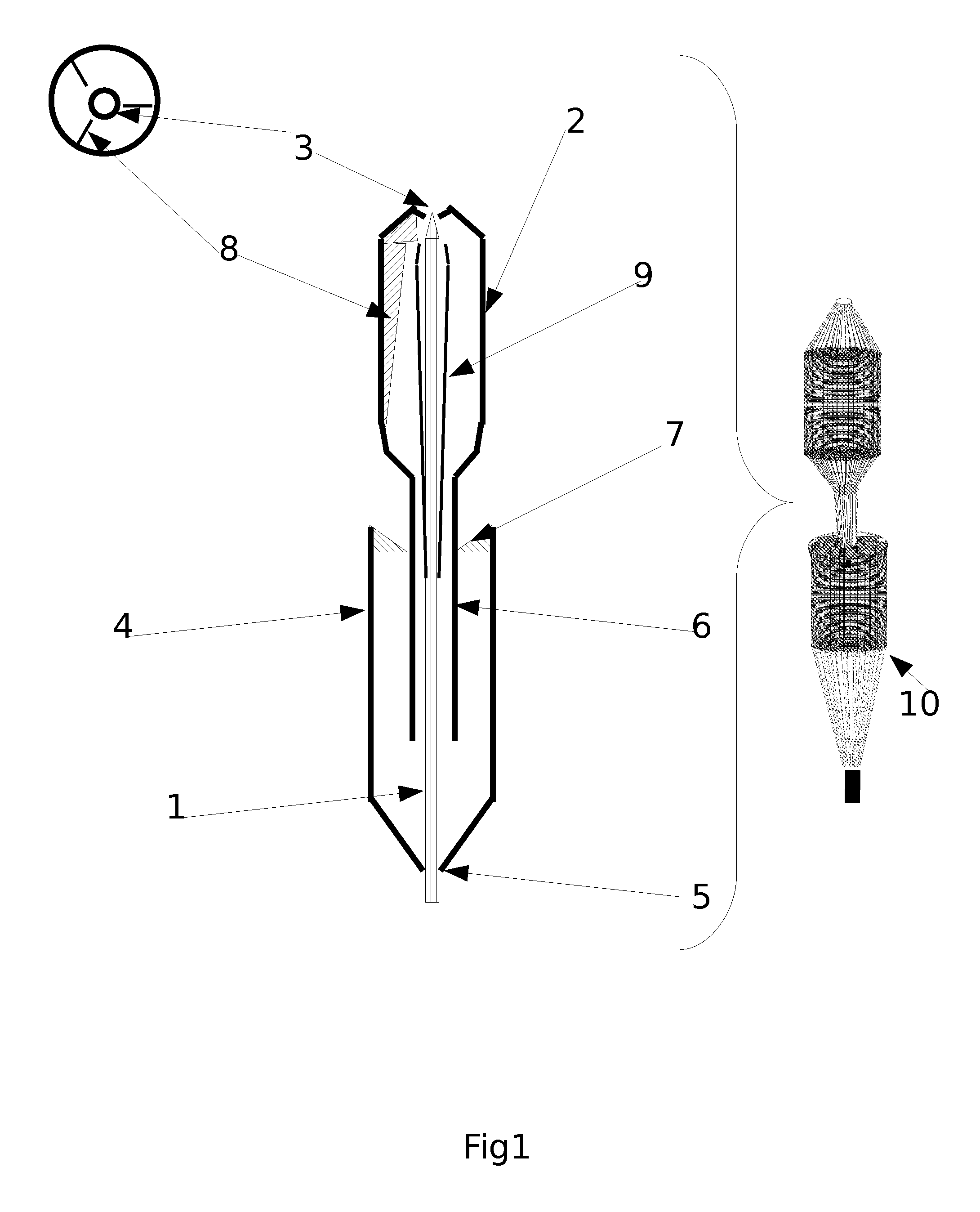Method for the desalination or purification of water by distillation of a spray (spray pump)
a technology of spray pump and desalination water, which is applied in water/sewage treatment, centrifugal force sediment separation, energy-based wastewater treatment, etc. it can solve the problems of limited service life, increased cost of fresh water produced, and high cost of ultrafiltration membranes. achieve the effect of efficient production of fresh water
- Summary
- Abstract
- Description
- Claims
- Application Information
AI Technical Summary
Benefits of technology
Problems solved by technology
Method used
Image
Examples
Embodiment Construction
[0035]1.1 In order to limit the energy required to evaporate liquid salt water or dirty water into vapour, the liquid water is first broken down into fine droplets having a size of between 1 mm and 1 micrometer in diameter.
[0036]1.2 In certain embodiments, the breakdown of the liquid water will be carried out using a spray or mist maker, using the pressure of the liquid through a spray nozzle, or a gas stream to cause the water to fractionate into droplets. In certain embodiments, the mist maker will consist of the elements of a low-pressure paint gun or else the elements comprising snowmakers. In a preferred embodiment, the mist maker will consist of a porous or non-porous wick FIG. 1.1. The porous wick, for example, consists of a frit (organic or metallic mineral) of synthetic or natural fibres; in some cases, it will enable the water to be filtered. The wick will optionally be perforated over the entire length thereof, with longitudinal capillaries preferably measuring less than ...
PUM
| Property | Measurement | Unit |
|---|---|---|
| Fraction | aaaaa | aaaaa |
| Fraction | aaaaa | aaaaa |
| Length | aaaaa | aaaaa |
Abstract
Description
Claims
Application Information
 Login to View More
Login to View More - R&D Engineer
- R&D Manager
- IP Professional
- Industry Leading Data Capabilities
- Powerful AI technology
- Patent DNA Extraction
Browse by: Latest US Patents, China's latest patents, Technical Efficacy Thesaurus, Application Domain, Technology Topic, Popular Technical Reports.
© 2024 PatSnap. All rights reserved.Legal|Privacy policy|Modern Slavery Act Transparency Statement|Sitemap|About US| Contact US: help@patsnap.com










